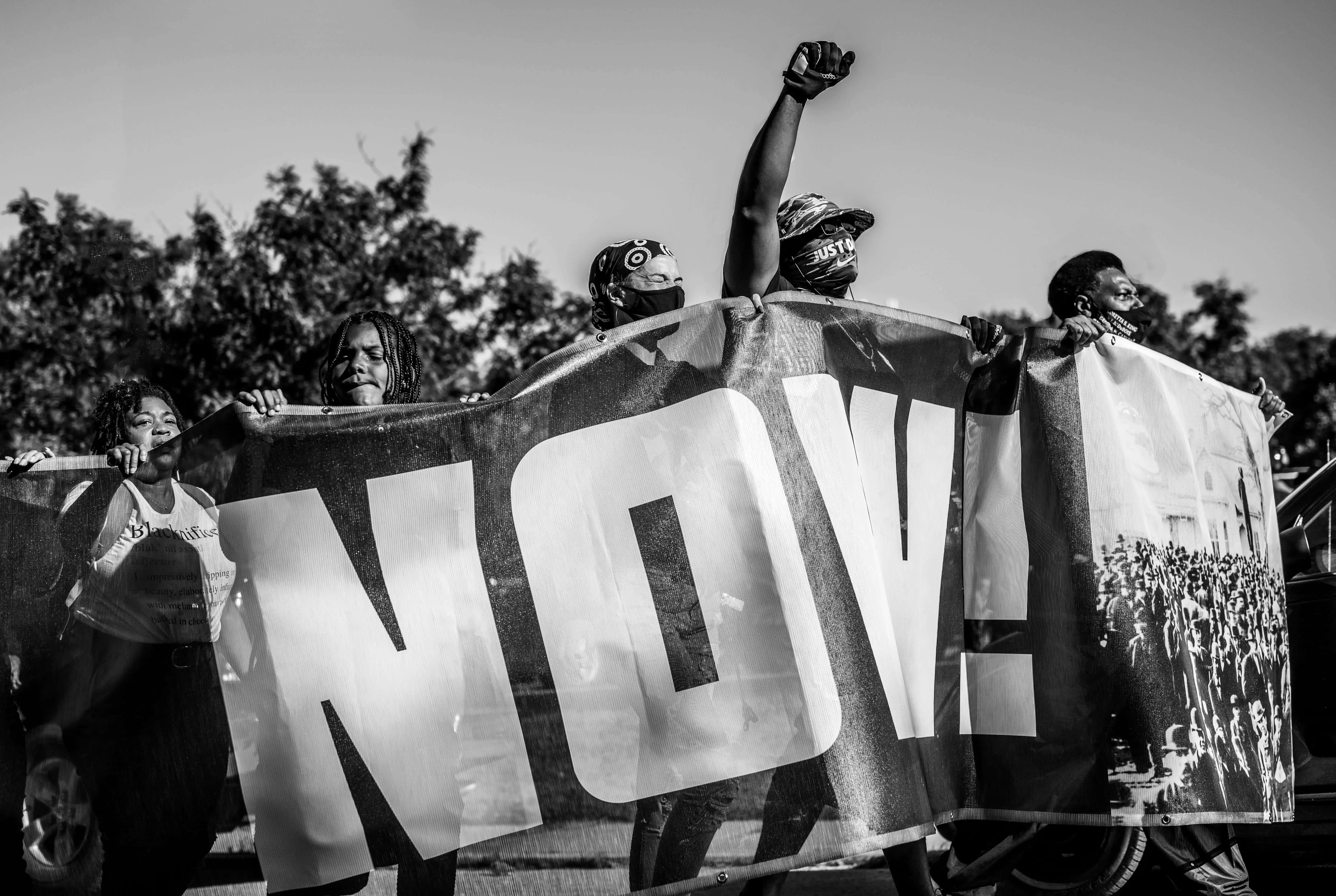Welcome to a pivotal exploration of a transformative era in American history: the American Civil Rights Movement. As we delve into the heart of this guide, we aim to understand not just when the American Civil Rights Movement started but also its profound impact on the fabric of society, its lasting legacies, and how it shapes our fight for justice today.
Why This Matters
For those at the threshold of their careers, grasping the roots and routes of social justice movements is crucial. It informs us about the workplace culture we strive to create: inclusive, diverse, and equitable. Through this guide, entry-level job seekers and mid-career professionals will better appreciate the movement’s complexities and triumphs.
This journey through history isn’t just a recounting of past events—it’s a beacon for future endeavors in civil rights and beyond. So, let’s set forth together to uncover the milestones of the Civil Rights Movement, celebrate its heroes, and learn from its challenges.
Origins of the Civil Rights Movement
The American Civil Rights Movement began in earnest during the post-World War II era, set against a background of deep-seated racial inequalities and segregation, particularly in the Southern United States. But to fully understand when the American Civil Rights Movement started, it’s crucial to look at its deeper historical roots:
Pre-20th Century Movements
Though the 1950s and 1960s are widely recognized for their high-profile activism, the foundation of civil rights advocacy stretches back to earlier centuries:
- Abolition of slavery with the 1865 Thirteenth Amendment
- Reconstruction era struggles and the brief period of potential racial equality
- Formation of the NAACP in 1909
The Great Migration
Between 1916 and 1970, the Great Migration saw millions of African Americans move from the rural Southern United States to urban centers in the North and West. This demographic shift played a crucial role in shaping the civil rights confrontations of the mid-20th century. The migration exposed inherent economic and social disparities, sparking initial movements and community organizing that laid the groundwork for later protests.
World War II Era
During and after World War II, African American veterans returned home only to face persistent discrimination and segregation despite their service. Their fight for freedom overseas highlighted the irony and injustice of racial segregation at home. This led to increased calls for civil rights, exemplified by President Truman’s desegregation of the armed forces in 1948.
Key Early Events
Several early events helped galvanize the movement:
- In 1954, the Supreme Court’s landmark decision in Brown v. Board of Education, which declared state laws establishing racial segregation in public schools unconstitutional, ignited national attention.
- The brutal murder of Emmett Till in 1955 and the subsequent public outrage marked a pivotal moment in the rise of civil rights awareness and activism.
This shows that the Civil Rights Movement’s roots run deep, with numerous events contributing to its rise. Understanding the origins helps grasp the complex social fabrics and the tremendous struggle fought by many generations.
Key Figures and Early Events
The Civil Rights Movement was propelled forward by the passion and persistence of several prominent figures whose leadership and courage ignited the drive for justice and equality:
Influential Leaders
Several individuals stand out for their role in guiding the movement:
- Martin Luther King Jr.: His advocacy of nonviolent protest became the movement’s hallmark.
- Rosa Parks: Known for her pivotal role in the Montgomery Bus Boycott.
- Malcolm X: Advocated for Black empowerment and the separation of black and white Americans.
- Thurgood Marshall: A critical legal strategist behind progressive Supreme Court rulings and the first African American Supreme Court Justice.
Pivotal Early Events
The struggle for civil rights included several critical events that highlighted the systemic racism enduring in society:
- The Montgomery Bus Boycott: 1955-1956 marked a significant early victory and introduced new leadership to the national civil rights movement.
- The Little Rock Nine: An incident in 1957 exposed the intense resistance to desegregation in schools, with nine African American students facing violent backlash for attending an all-white high school.
We must also acknowledge groups that played pivotal roles. In 1961, the Freedom Riders, groups composed mainly of African American and white college students, took bus trips through the American South to protest segregated bus terminals and test the non-enforcement of Supreme Court decisions. Understanding these key players and events is essential for appreciating the movement’s complexity and challenges. These figures and events helped shape the path toward greater racial equality, drawing national and international attention to the deeply ingrained racial issues in the United States.
Legal Milestones
Several pivotal legal milestones furthered its cause as the Civil Rights Movement progressed, strengthening the call for equality and justice across America.
Crucial Supreme Court Cases
The legal battles fought during this period were monumental in shaping the movement:
- Brown v. Board of Education (1954): This Supreme Court decision ended segregation in public schools, stating it was unconstitutional.
- Civil Rights Act of 1964: This comprehensive legislation outlawed discrimination based on race, color, religion, sex, or national origin.
- Voting Rights Act of 1965: A critical act that outlawed discriminatory voting practices that had been responsible for the widespread voting disenfranchisement of African Americans.
Impact on Society
Each judicial victory inspired further changes and provided essential legal backing to the movement:
- The Civil Rights Act of 1964 enabled subsequent legislation focused on different sectors, such as employment discrimination.
- The Voting Rights Act paved the way for increased African American voters and elected officials.
Through these pivotal legal successes, the movement gained undeniable momentum, which helped catalyze further nationwide action. Additionally, these victories underscored the importance of the judicial system in rectifying deep-seated societal injustices. These achievements remind us not just of where the movement succeeded but also of why these changes were essential. So, remembering when the American Civil Rights Movement started helps connect the past efforts to current challenges and victories.
Media Influence and Public Perception
The impact of media on the Civil Rights Movement was profound, shaping public perception and influencing the national and international dialogue regarding racial equality in America.
The Role of Television
Television played a pivotal role in bringing the reality of racial injustice into the living rooms of Americans:
- Images of peaceful protesters facing violent opposition caught the empathy of viewers nationwide.
- Significant events like the March on Washington were broadcast, highlighting the scale and unity of the movement.
Press Coverage
Newspapers and magazines also contributed significantly:
- Journalists risked their safety to cover stories in the South, often highlighting the brutality of segregation.
- Iconic publications like Life magazine and The New York Times ran in-depth stories that helped sway public opinion.
Influence on Legislation
The widespread media coverage not only informed and educated the public but also pressured politicians to act:
- Televised brutalities and injustices led to public outcry, pushing for legislative change.
- Media portrayal of civil rights events helped gain widespread support for significant legislation such as the Civil Rights Act and Voting Rights Act.
The media played an indispensable role in the civil rights era, turning local struggles into national issues and ensuring that the movement’s voice and vision reached far beyond its geographical confines.
Challenges and Opposition
The path to civil rights was fraught with significant challenges and opposition that tested the movement’s resolve and unity.
Segregationists and Violence
Resistance to desegregation and equality was fierce:
- White supremacist groups, like the Ku Klux Klan, intensified their campaigns of intimidation and violence.
- Segregationists within local governments often used legal and illegal means to obstruct progress.
Government Hesitation
Political support for civil rights was often lukewarm, with many politicians reluctant to alienate segregationist voters:
- Federal intervention was sometimes necessary to uphold the law, as seen when integrating schools.
- Legislation like the Civil Rights Act faced tough opposition in Congress before its passage.
Economic and Social Barriers
Economic disparities and entrenched racist ideologies posed continuing obstacles:
- Discrimination in employment and education persisted, limiting opportunities for African Americans.
- Social prejudices didn’t disappear with new laws; overcoming them required ongoing effort and activism.
The adversity faced during the Civil Rights Movement was substantial, but so were the resilience and determination of those who fought for equality. These struggles remind us that progress often requires enduring commitment and courage. Explore The Leadership Conference on Civil and Human Rights for further insights into this period.
Significant Outcomes and Impact
The Civil Rights Movement led to profound changes in American law and society, marking a major shift towards racial equality that resonated worldwide.
Legislative Achievements
The movement’s success in pushing through vital legislation transformed the societal landscape:
- The Civil Rights Act of 1964 and the Voting Rights Act of 1965 were pivotal in dismantling institutional racism.
- The Fair Housing Act of 1968 aimed to eliminate discrimination in renting and buying homes.
Societal Changes
Beyond legislation, the movement also spurred broader societal shifts:
- Increased awareness and activism around issues of racial equality.
- An empowered generation of African Americans and other minority groups began to seek and achieve significant political and cultural positions.
Global Impact
The achievements of the American Civil Rights Movement inspired similar struggles for equality worldwide and provided a blueprint for nonviolent resistance and advocacy.
In tracing when the American Civil Rights Movement started and its ensuing ripple effects, it’s clear its legacy is a testament to the power of collective action in pursuit of fundamental human rights. For more details, look at The National Park Service’s feature on the Civil Rights Act.
Modern Reflections and Ongoing Influence
The Civil Rights Movement is not just a historical milestone; its influence extends into modern times, shaping contemporary discussions and movements around civil rights and equality.
Lasting Legacy
The movement’s strategies and messages continue to resonate:
- Current advocacy for equality and justice often draws directly from tactics and speeches of 1960s civil rights leaders.
- The celebration of Martin Luther King Jr. Day reflects the enduring impact of his work and ideology.
Ongoing Challenges
Despite significant advances, several challenges persist in the quest for true equality:
- Systemic racism and economic disparities still affect millions, prompting ongoing civil rights activism.
- Recent movements like Black Lives Matter underscore the fact that the fight for civil rights is far from over.
Educational Efforts
Institutions and educational programs have been established to teach new generations about the struggles and successes of the civil rights era:
- Programs at places like the National Civil Rights Museum offer insights into the movement’s history and ongoing impact.
- Scholarly studies and public education projects aim to maintain awareness and inspire future activism.
This ongoing reflection and adaptation demonstrate that the Civil Rights Movement is a continuing journey, not just a historical event. Interested in exploring career opportunities in organizations focused on advocacy and diversity yet?
FAQs
As we explore “when did the American Civil Rights Movement start,” more questions often arise. Here are a few frequently asked questions and their answers:
What was the main goal of the Civil Rights Movement?
The main goal was to end racial segregation and discrimination against African Americans and to secure legal recognition and federal protection of the citizenship rights enumerated in the Constitution and federal law.
Who were the unsung heroes of the Civil Rights Movement?
Alongside well-known leaders, many others played crucial roles:
- Women like Ella Baker and Fannie Lou Hamer empowered grassroots movements.
- Organizations such as the Student Nonviolent Coordinating Committee (SNCC) were pivotal.
How did the movement influence other social movements?
The tactics and successes of the Civil Rights Movement inspired other groups, including the women’s rights and LGBTQ+ rights movements, to pursue equality.
Is the Civil Rights Movement over?
No, the struggle for equality and justice continues. New challenges and movements have emerged, showing civil rights advocacy’s evolution and ongoing relevance.
Did the Civil Rights Movement impact economic policies?
Yes, the movement led to greater scrutiny and eventual reforms in employment and education, promoting broader economic equality.
What was the role of music in the Civil Rights Movement?
Music played a vital role, providing an emotional connection and a rallying cry for the movement through songs that voiced the struggle for freedom and equality.
How did children participate in the Civil Rights Movement?
Children and young adults were actively involved, particularly in demonstrations and sit-ins, which often targeted the unfair policies they faced at schools and public places.
Did the American Civil Rights Movement inspire other civil rights movements around the world?
Yes, movements in South Africa and Northern Ireland, among others, adopted similar tactics of nonviolent protest inspired by the American model.
What are some still unresolved issues from the Civil Rights Movement era?
Issues such as racial profiling, economic disparity, and unequal educational resources remain challenges today, reflecting the unfinished work of the movement.
Conclusion
In answering, “When did the American Civil Rights Movement start,” we traverse a rich history filled with enduring struggles and monumental achievements. The movement reshaped laws and societal norms in the United States and left a lasting imprint on the global fight for justice and equality. Its legacies inspire ongoing efforts for societal reform and serve as a beacon for future generations advocating for civil rights.
Carry Forward the Legacy
The journey is far from complete. It is upon us to continue this important work. By engaging with history, we can contribute to a better future. Join Diversity Employment’s job board today and be part of a community committed to diversity, equality, and inclusion. Together, we can build an environment where everyone has the opportunity to flourish!
Let’s all move forward with the courage of our predecessors, fostering an inclusive culture at every level of society. Are you ready to make an impact? Join now and be the change you wish to see in the world.




